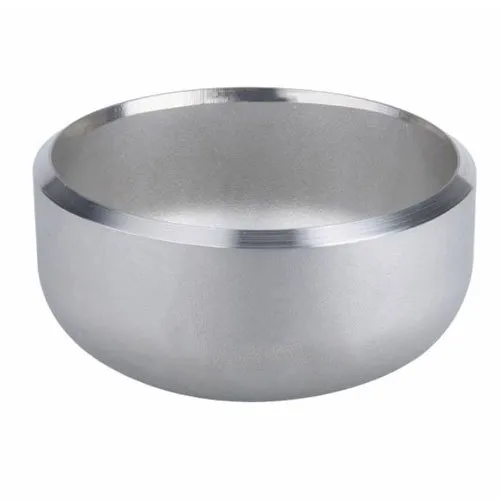-
Cangzhou Yulong Steel Co., Ltd.
-
Phone:
+86 13303177267 -
Email:
admin@ylsteelfittings.com

Dec . 03, 2024 19:38 Back to list
Understanding Different Grades of Stainless Steel Pipes for Various Applications
Understanding Stainless Steel Pipe Grades
Stainless steel is a popular choice for piping systems due to its remarkable strength, durability, and resistance to corrosion. However, not all stainless steel pipes are created equal. They come in a variety of grades, each tailored to specific applications and environments. This article will explore the most common grades of stainless steel pipes, their composition, properties, and applications.
What Are Stainless Steel Grades?
Stainless steel grades are defined by their chemical composition, primarily the amounts of chromium, nickel, and other alloying elements. The grades are classified by different standards, including ASTM, ASME, EN, and UNS. The most widely recognized system in the United States is the American Iron and Steel Institute (AISI) classification. The most common grades for stainless steel pipes include 304, 316, 321, 347, duplex, and super duplex stainless steels.
1. Grade 304
Grade 304 is one of the most versatile and commonly used stainless steels. It contains approximately 18% chromium and 8% nickel, giving it excellent corrosion resistance and workability. This grade is often used for a variety of applications such as handrails, tanks, and piping systems in food processing. Its good welding characteristics and ability to withstand temperature up to 870°C make it suitable for many general-purpose applications. However, it is not recommended for marine environments due to its susceptibility to chloride-induced pitting.
2. Grade 316
Grade 316 is often considered the marine grade stainless steel due to its enhanced resistance to corrosion, particularly from chlorides. It contains molybdenum, which significantly improves its pitting resistance compared to 304. This grade is commonly used in applications where exposure to seawater or harsh chemicals is prevalent, making it ideal for the chemical processing and marine industries. In addition to these applications, it is also widely used in pharmaceuticals and food processing equipment.
3. Grade 321
stainless steel pipe grades

Grade 321 stainless steel is best known for its high-temperature resistance and stability. It contains titanium, which helps fix carbon to prevent carbide precipitation during welding. This property makes Grade 321 particularly useful in high-temperature applications such as aircraft exhaust stacks, industrial furnaces, and thermal processing equipment. The improved corrosion resistance and better weldability make it a preferred choice in the oil and gas industry.
4. Grade 347
Similar to Grade 321, Grade 347 is stabilized with niobium, which enhances its resistance to intergranular corrosion. This grade is particularly effective in applications involving high temperatures and corrosive environments. It is commonly used in industries like oil and gas, petrochemical, and power generation. The presence of niobium allows for better performance in welding and fabrication processes, making it a reliable choice for critical applications.
5. Duplex Stainless Steels
Duplex stainless steels, such as 2205 and 2507, are a combination of austenitic and ferritic stainless steels. This unique microstructure offers a balance of strength and corrosion resistance. Duplex stainless steels typically contain around 22% chromium and 5% nickel, providing superior resistance against stress corrosion cracking and pitting. These grades are often used in applications such as offshore oil drilling, chemical processing, and power generation, where high strength and resistance to harsh environments are essential.
6. Super Duplex Stainless Steels
Super duplex stainless steels take the properties of duplex stainless steel to the next level. With high levels of chromium (around 25%) and molybdenum, these grades offer exceptional corrosion resistance and strength. They are suitable for extreme environments, including seawater applications and chemical process plants. Their robust characteristics make them ideal for applications involving high pressures and temperatures.
Conclusion
When selecting stainless steel pipes, understanding the various grades available is essential. Each grade offers unique properties that make it suitable for specific applications. Whether you require corrosion resistance, high-temperature stability, or strength, there's a stainless steel grade that can meet your needs. By familiarizing yourself with these grades, you can ensure that your piping system performs optimally and stands the test of time. As the demand for stainless steel continues to grow across various industries, knowing the right grade to use will be crucial for optimal performance and durability in your projects.
Latest news
-
ANSI 150P SS304 SO FLANGE
NewsFeb.14,2025
-
ASTM A333GR6 STEEL PIPE
NewsJan.20,2025
-
ANSI B16.5 WELDING NECK FLANGE
NewsJan.15,2026
-
ANSI B16.5 SLIP-ON FLANGE
NewsApr.19,2024
-
DIN86044 PLATE FLANGE
NewsApr.19,2024
-
DIN2527 BLIND FLANGE
NewsApr.12,2024
-
JIS B2311 Butt-Welding Fittings LR/SR 45°/90° /180°Seamless/Weld
NewsApr.23,2024
-
DIN2605-2617 Butt-Welding Fittings LR/SR 45°/90°/180° Seamless/Weld
NewsApr.23,2024











